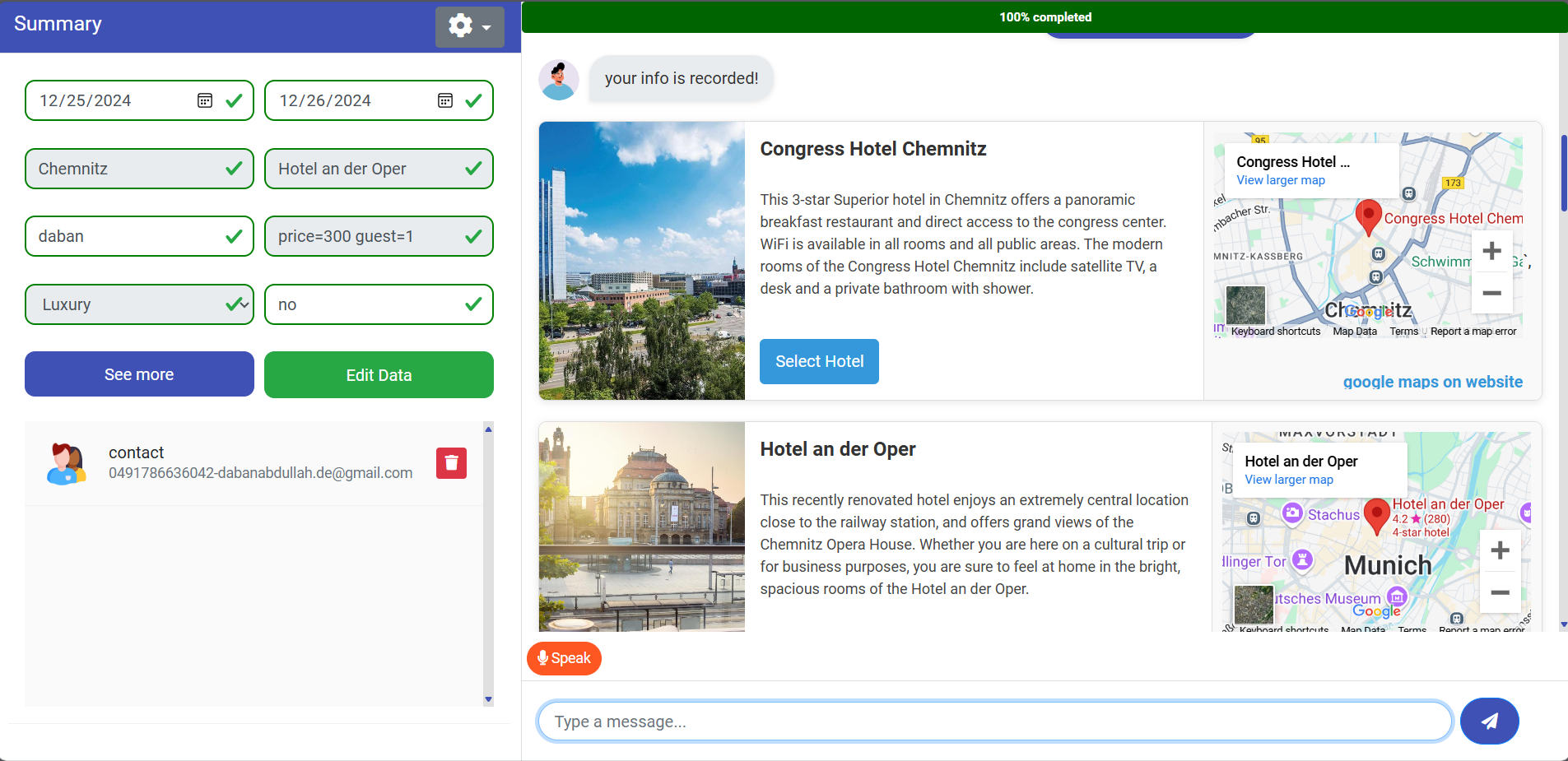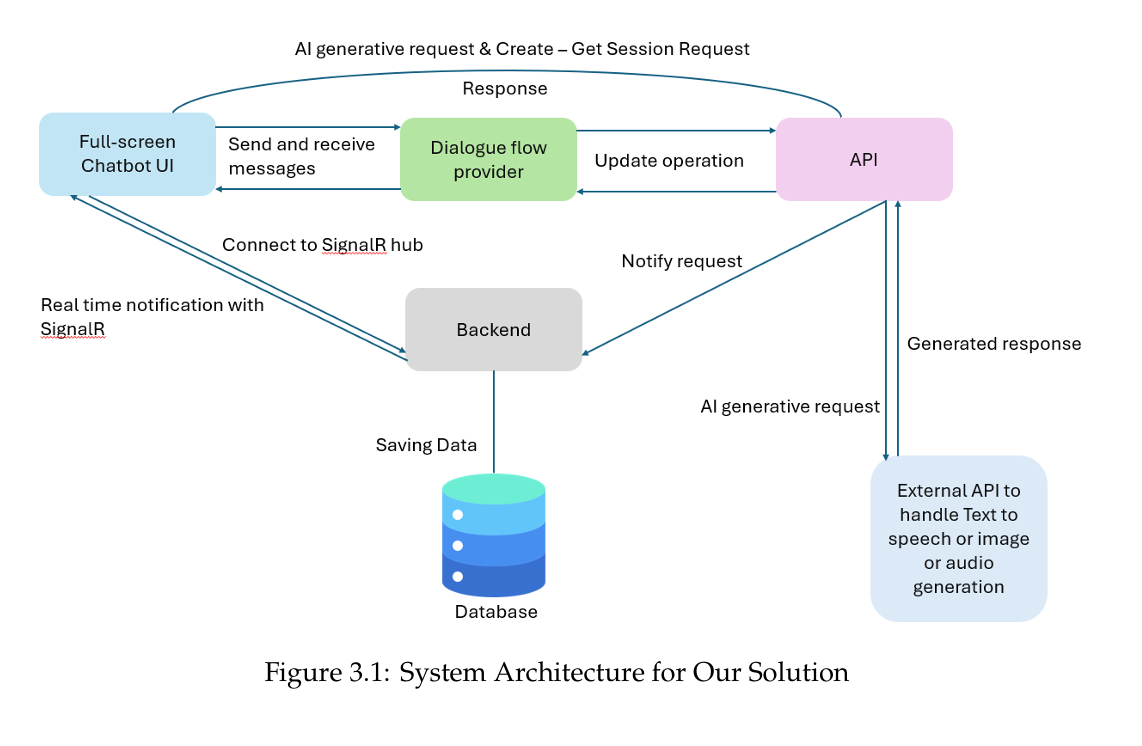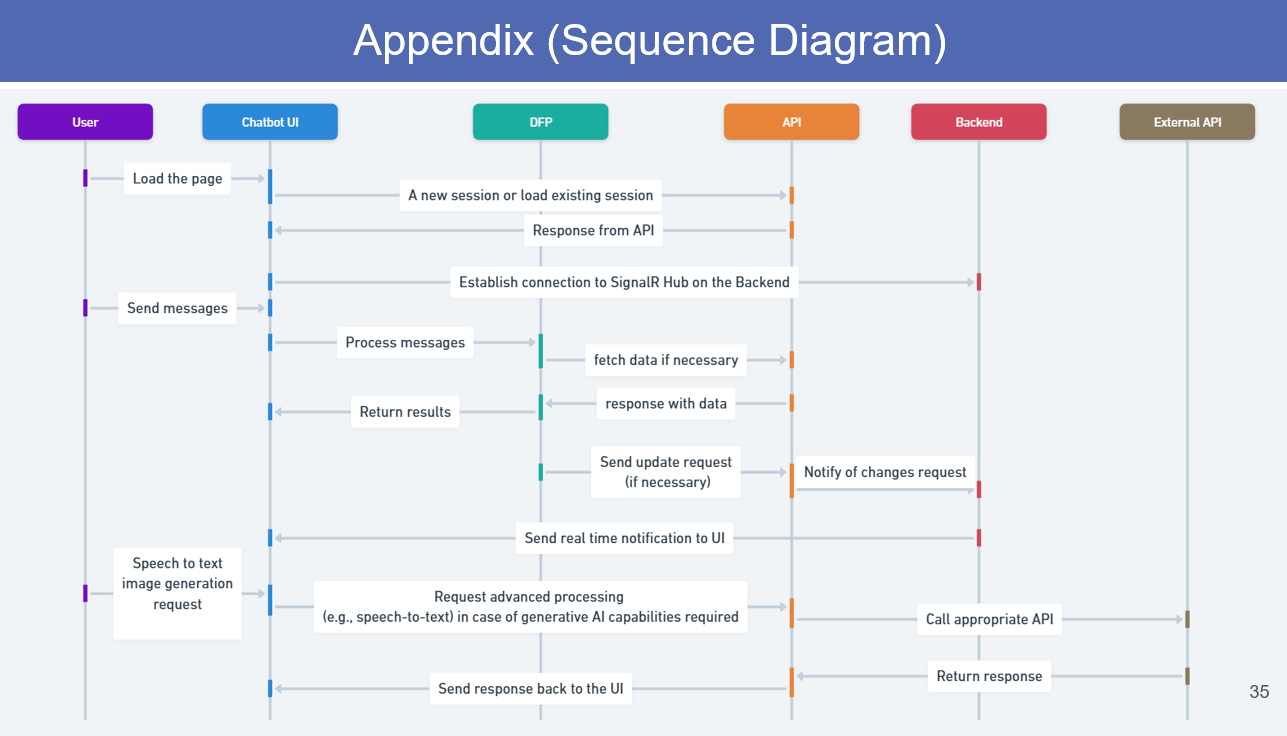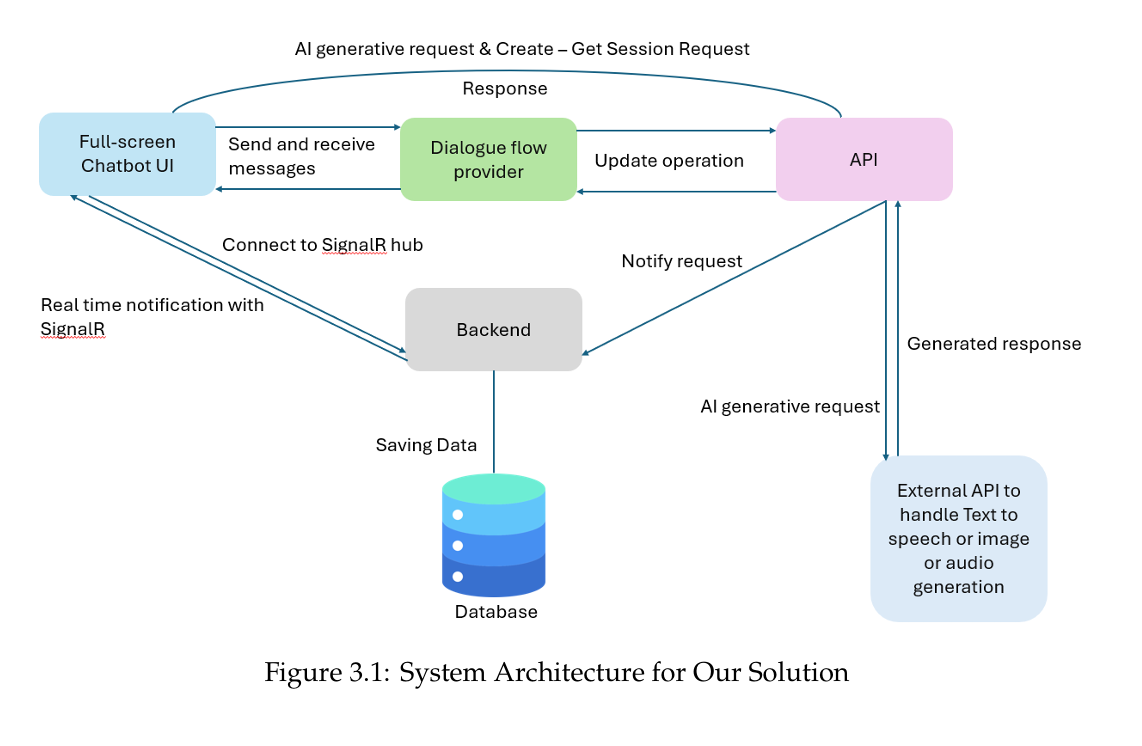Master
: designing and evaluating strategies for representing user input data in fullscreen chatbot interfaces to improve clarity, usability, and user experience in tasks like reservations and bookings

This master’s thesis, titled “Input Data Representation Strategies in Fullscreen Chatbot Interfaces”, explores how to design, implement, and evaluate effective methods for representing user input within fullscreen conversational interfaces. The work is motivated by the limitations of traditional chatbot designs, which present information in a strictly linear, text-based flow. Such interfaces make it difficult for users to review, modify, and understand their inputs, especially in complex tasks like hotel reservations, flight bookings, or appointment scheduling.
To address this challenge, the thesis investigates a set of data representation strategies that combine the strengths of Graphical User Interfaces (GUIs) and Conversational User Interfaces (CUIs). The goal is to reduce cognitive load, provide real-time feedback, and improve user awareness by embedding visual summaries, interactive elements, and multimodal features into the chatbot conversation.
Key contributions include:
1-Requirement Analysis – identifying essential features for effective input representation (clear overviews, graphical elements, session persistence, error prevention, real-time updates, multimodality).
2-Prototyping – designing and implementing three fullscreen chatbot prototypes that integrate GUI components with conversational flows.
3-Evaluation – conducting user studies to measure the effectiveness of these strategies on usability, user satisfaction, and task efficiency.
4-Design Insights – formulating guidelines and “rules of thumb” for future chatbot interface designs that balance conversational simplicity with visual clarity.
Watch the Video Here
In conclusion, the thesis demonstrates that thoughtfully designed full-screen chatbot interfaces can enhance user experience by providing clear, interactive, and visually supported representations of input data, without losing the natural, step-by-step flow of conversation.

System Components
1-Frontend (Fullscreen Chatbot UI)
Provides the user-facing interface. Displays conversational flow along with data representation elements (side panels, inline summaries, progress bars). Built with web technologies for responsiveness.
2-Backend (ASP.NET C# + SignalR)
Handles business logic and conversation state management. Manages notifications and real-time communication with clients.
3-Database (SQL-based)
Stores session data, reservations (hotels, rooms, users). Supports persistence so that progress is not lost if a session is interrupted.
4-Dialogue Flow Provider (DFP / Botpress)
Manages conversational logic, intent recognition, and flow design. Connects natural language input with structured tasks (e.g., booking).
5-API Layer
Exposes data from the backend to the chatbot and UI. Ensures modular communication between components.
🎯 Key Contributions
Requirement Analysis
Defined concrete requirements for effective input data representation in fullscreen chatbots, including:
Clear data overview
Real-time feedback
Session & data persistence
Error prevention
Integration of graphical elements
Multimodal interaction
Novel Data Representation Strategies
Proposed and implemented three different fullscreen chatbot prototypes for hotel/restaurant reservations.
Each prototype explored unique ways of combining GUI elements with CUI flows, such as:
Side panels (fixed overview)
Inline summaries
Collapsible review sections
Progress bars and error-prevention forms
Prototypical Implementation
Built a working system integrating ASP.NET (backend), SignalR (real-time updates), SQL database (persistence), and Botpress (DFP for dialogue flow).
Ensured smooth handshaking between conversation flow and structured data representation.
User Study & Evaluation
Conducted usability tests to compare prototypes.
Measured impact on cognitive load, task efficiency, user awareness, and satisfaction.
Produced quantitative and qualitative insights on which strategies improve clarity and user experience.
Design Guidelines / Rules of Thumb
Derived practical design principles for future fullscreen chatbot interfaces, showing how to balance conversational simplicity with graphical clarity.
These guidelines serve as a bridge between GUI traditions and conversational UI needs.

